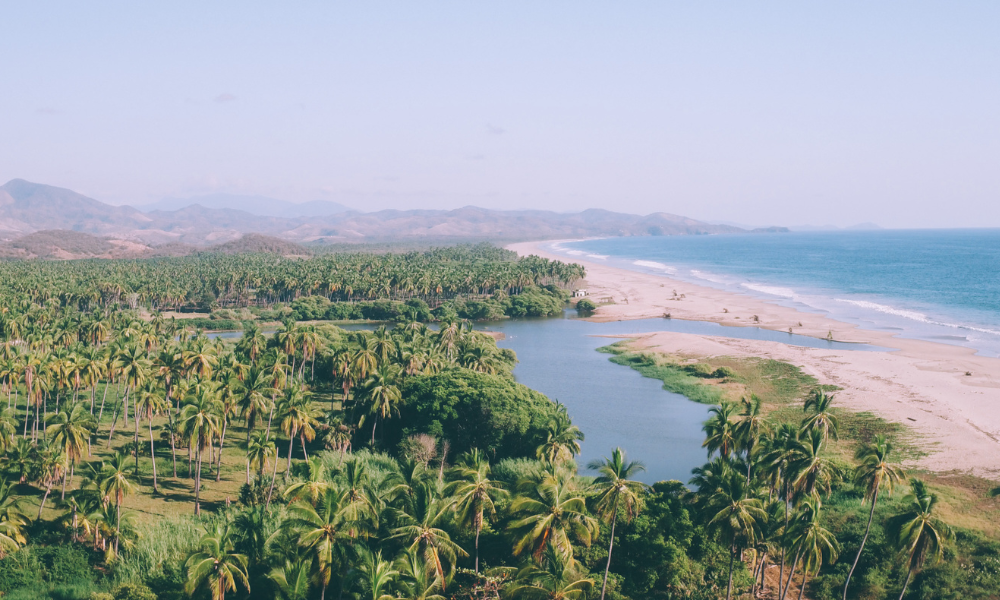We believe in highlighting the good work tourism businesses are doing to promote responsible travel. In this series, we will be highlighting the work of our platinum sponsors, a group of responsibly-operated hotels and tour operators from around the world whose values align with our mission and have committed to supporting CREST for at least five years. For this feature, we’ve interviewed Playa Viva, a CREST platinum sponsor since 2019, to learn more about their watershed regeneration project, ReSiMar.
Engaging with the local community is essential for responsible tourism. How does Playa Viva collaborate with nearby communities to create economic opportunities, support cultural exchange, and contribute to local development?
Reciprocity is central to our watershed regeneration project, ReSiMar. As one of the world’s most highly-rated B-Corporation hotels and a destination for guests who care about their impact on the ground, consideration of the ecosystem and the ripple effect of our decisions is paramount. We have spent over 15 years building our hotel, permaculture farm, turtle sanctuary, and guest excursions in collaboration with the community. This strong relationship with the community ensures that what we do is as impactful to the guests as it is to the locals and our environment.
Our ReSiMar watershed regeneration project now covers 5 nodes: Education, Permaculture, Water, Marine Life, and Reforestation. All the nodes work together to develop the potential of local people, engage them in regenerative practices, and enhance cultural appreciation and English-speaking abilities while simultaneously creating sustainable job opportunities. For example, we created a bespoke regenerative education curriculum based on valuable contributions from specialists in education and environmental studies (including scholars from Harvard University), integrating key aspects for student development in cognitive, social, and environmental terms.
This curriculum recognizes that meaningful learning is enriched by involving the every day, identifying the emotions and individuality of students while recognizing and valuing the link with their social and territorial environment. The program consists of 10 interrelated modules provided by our Education Coordinators in the communities of Juluchuca, La Ceiba, and Las Placitas. Since its inception, the program has been highlighted for its uniqueness by Harvard University and is used as a case study within the future of education studies taught at the university. We have 221 students engaged with the curriculum and so far this year we have taught 756 hours of English classes which drastically enhance prospects for the children in our rural watershed.
Another great example is the Juluchuca Women’s Cooperative which has the aim of redefining roles for women in our community. Playa Viva’s Permaculture Team farms 20 acres of land using regenerative permaculture methods. Beyond supplying the hotel with organic produce the team is driven by the aim of transitioning the entire watershed to permaculture methods through education and best practice sharing and creating demand for organic produce which supports sustainable revenue streams for local farmers. This past year the hotel’s Permaculture team founded the Juluchuca Women’s Cooperative, which aims to facilitate capacity building in organic production, including getting women into farm production roles traditionally reserved for men, strengthening social networks, and creating space for mutual support. Through the design and establishment of multi-strata forest gardens at the home level, women develop skills in organic production and seasonal planning, permaculture design, and land regeneration techniques. The cooperative currently has a focus on filling the supply gap for local organic products such as coconut oil, turmeric, and moringa.
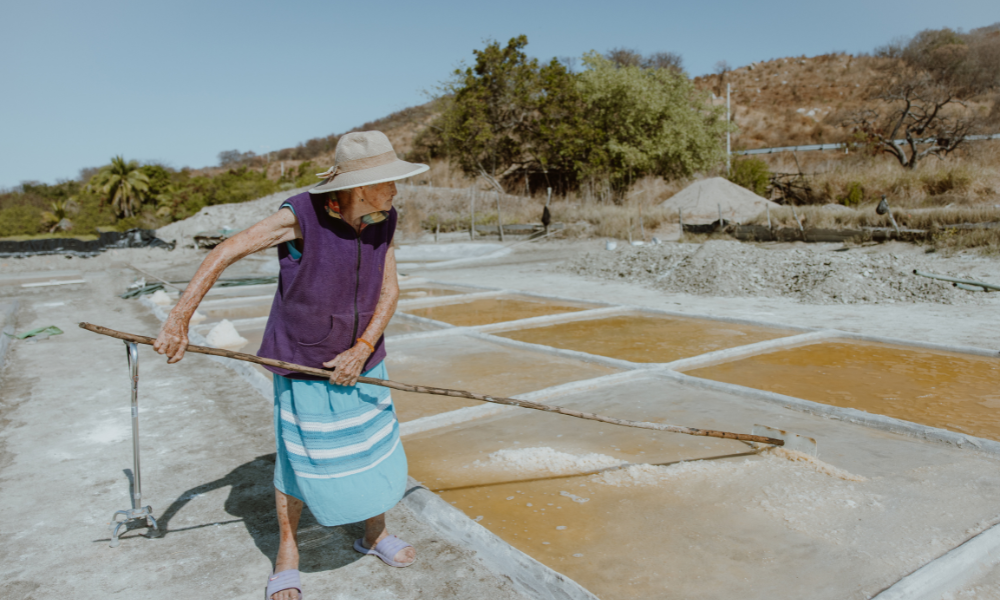
The coastal ecosystem is vital for healthy marine life. How does Playa Viva contribute to coastal and marine conservation and promote responsible practices?
We understand that Playa Viva is not a bubble, no matter how much work we do to improve the ecosystem on our beach and the estuary that meets it will have little impact if the whole of the watershed is not engaged with regenerative practices. What happens at the top, middle, and lower watersheds directly affects us. As part of our ReSiMar – Marine Life & Water nodes we have projects working on Turtle conservation, support of sustainable fishing along our coastlines, mangrove restoration, and a citizen science program to engage people in the communities to track and understand the importance of water quality actively.
We are proud to say that thanks to upgrades in 2022, La Tortuga Viva is now the largest turtle sanctuary on the Pacific coast of Mexico and acts as a leading example of turtle conservation. Throughout 2023 we released 3 different species of turtle hatchings, 32,987 hatchlings in total. Guests can attend daily turtle releases, tour the sanctuary, and head out on night patrols with our all-volunteer team. Recently we hosted a Marine Biologist who undertook research in the local communities of La Barrita and El Cayacal. Being small-scale and artisanal fisheries, they present good examples of voluntary conservation closures, providing a reference in the state of Costa Chica and Grande´s Cost in terms of species conservation.
We are passionate about helping them to secure a more stable and sustainable future. Part of our support includes the offer of a new guest experience where local fishermen take guests out on their morning fishing trip to learn about the complexities of life as a fisherman on this coastline and get stuck in securing a catch of the day. We feel it is vitally important for us to give the local community a chance to tell their stories and by enabling guest interactions like releasing turtles and fishing we have seen time and time again that these experiences are transformative in effect of causing a mindset shift for the traveler and oftentimes the community members as well.
Sustainable architecture and design are important in eco-friendly accommodations. How does Playa Viva incorporate sustainable building practices and utilize environmentally friendly materials in its facilities?
In 2007, Playa Viva hosted its first design charrettes led by Regenesis Group starting down the path of REGENERATIVE design and architecture. The process started with a whole system approach detailing the History of Place, understanding how this place was degraded over time to better understand our role in regenerating it and bringing back the abundance that was once here. The original design was the transfer palm trees from the existing inland coconut grove to the beachfront, and build treehouses on the palm trees. That is exactly what we have built utilizing renewable bamboo as a light and fast-growing building material. Beyond being 100% off-grid solar, solar thermal hot water, processing our own water, sourcing materials locally (such as walls being finished with local clay pigments rather than paint) and so much more. We did not pursue LEED Certification because our goal was to go beyond LEED. We have pursued B-Corp Certification and obtained a score of 110, the highest score for any hotel in the world, at least until May of 2023 when we were surpassed. We are in the process of recertification with the goal of once again obtaining the highest rating of any hotel. Core to our building and ongoing operations is to operate beyond green, beyond sustainable, and be as regenerative as we can be.
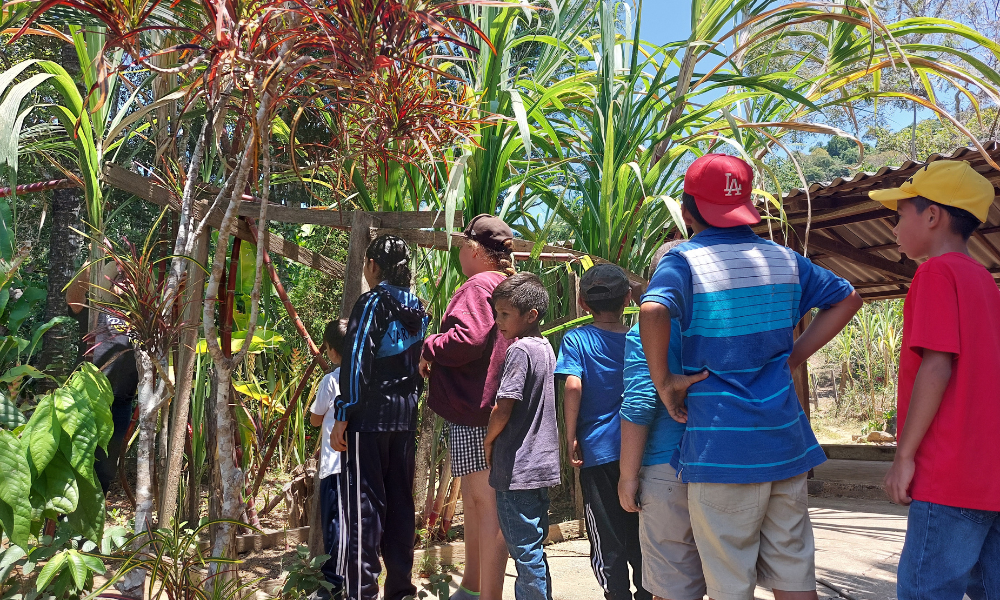
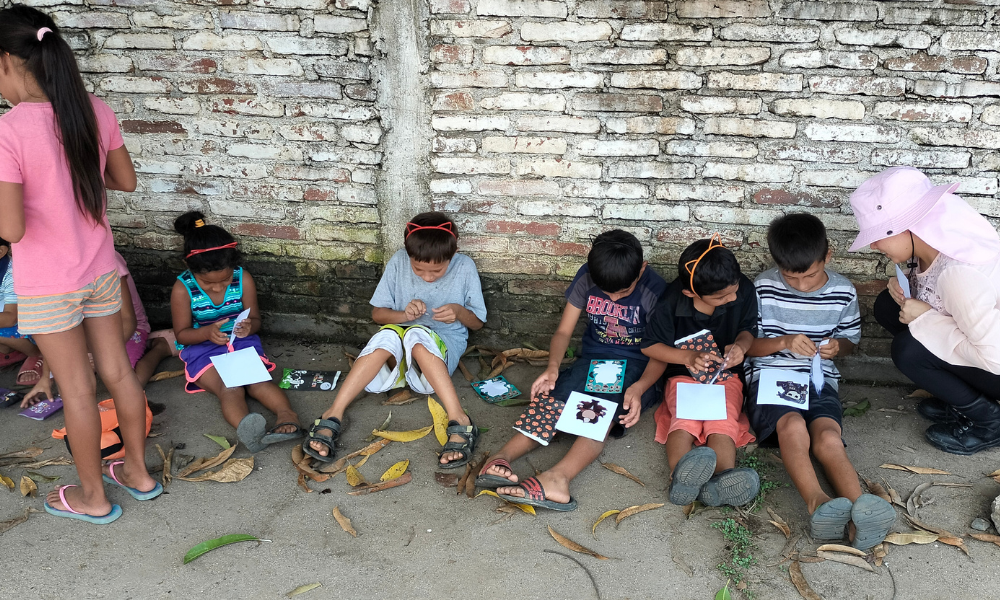
Environmental education can foster a sense of responsibility among travelers. How does Playa Viva educate its guests about the importance of environmental conservation and inspire them to support sustainable practices during their stay?
It’s simple really, we give them opportunities to authentically engage with our ReSiMar work at all points of their experience, even if they don’t know that is what is happening. There’s a quote we like to use “In the end, we will conserve only what we love; we will love only what we understand; and we will understand only what we are taught.” (Baba Dioum, 1968.)
It starts as soon as guests arrive at the hotel, during our welcome tours our holistic hosts explain the Playa Viva ethos and how their being here is helping us to drive change in the watershed and create a replicable model for regenerative tourism. Our guests are fed beautiful, nutritious farm-to-table food that comes from our farm & local producers and we offer the opportunity for them to visit the farm, meet the team and understand where their food comes from, the principles of permaculture and how we are engaging farmers in the watershed. They are also encouraged to attend our morning turtle releases which not only is a unique experience but also an opportunity for them to learn about turtle conservation. Even if guests decide not to engage with any of our projects the simple act of staying here immersed in the luxury of nature, waking up to the sound of the Pacific Ocean and abundant wildlife, taking time to enjoy yoga, and just ‘be’ is usually enough to spark conversations with fellow guests around environmental responsibility. One of our core principles is to ‘Create Meaningful Community’ so it never gets old hearing guests naturally bring up these topics and tell us that Playa Viva has shifted their perspective on X, Y, and Z.
What initiatives does Playa Viva have to minimize waste, conserve resources, and encourage eco-friendly practices among guests and staff?
One of our 5 core principles is cleaner, more sustainable, more renewable, more transparent water, energy, and waste stream management. First, we are 100% off-grid solar and heat all water with the sun as well (solar thermal). We process all of our own water on-site so that it enters our ecosystem clean and renewable. As for waste, the key is to reduce waste coming in so we reduce waste going out. Our food waste (actually we see all “waste” as as a resource rather than as waste) is divided into three streams: one for the pigs (all pork products consumed by the kitchen our supplied by our farm), two for the worms for vermiculture (which goes back into our farm for compost) and lastly for general soil compost. We measure/weigh all compost going back into our ecosystem.
Unfortunately, no good solutions exist for recycling plastics so the key is to reduce plastics coming in and going out of our operations. Our team takes the initiative of reducing plastics during sourcing, an example is when buying meat, fish, poultry, etc. our team arrives at our suppliers with designated Tupperware for each item to reduce the plastic packaging from these suppliers. All cardboard is saved for the farm to line garden beds. Glass bottles are cut to create drinking glasses. These are just a few ways we conserve, reduce, and reuse waste.
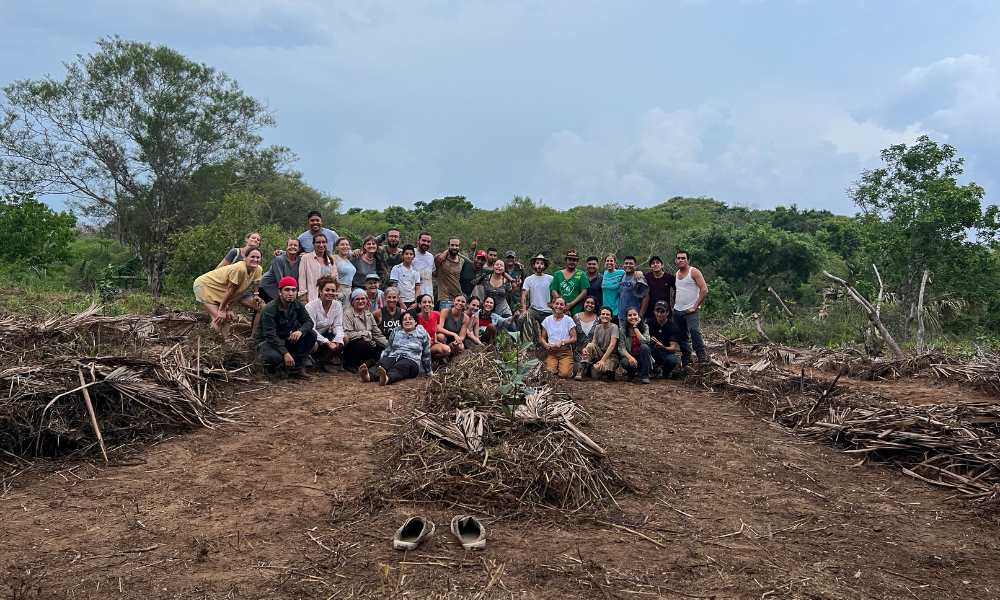
Collaboration with conservation organizations can enhance sustainable efforts. How does Playa Viva partner with local or international groups to support environmental conservation and biodiversity protection in the region?
Collaboration is key to our success in social and environmental impact. We partner with LegacyWorks Group as a key strategic partner leading our regenerative watershed endeavor. This endeavor, ReSiMar, REgenerating from SIerra to MAR, is divided into 5 nodes each with a strategic partner collaborating on the success of each node. The 5 nodes include (with the following strategic partner):
- Water – Fondo Para La Conservación y La Educación Ambiental AC (Fund for Conservation and Environmental Education) FCEA
- Education – Mexicanos Primero, Vision 2030 and Fundacion JUCONI and Radix Education.
- Marine Life – LegacyWorks Group
- Permaculture – Amanda Harris, Playa Viva farm
- Reforestation – TB
Additionally, Playa Viva has supported a group of 14 volunteers from the community in support of a marine turtle sanctuary project called La Tortuga Viva. The turtle sanctuary and all our impact work is further supported by The Ocean Foundation as our US fiscal sponsor with FCEA serving as our Mexican fiscal sponsor. In addition to our strategic relationships, we host up to 6 international volunteers coming from programs as varied as the Bren School of Environmental Science & Management to Istom Ecole Supérieure D’agro-Développement International in France and many more. We are very proud to host students and graduates from all over the world to participate in our special form of regenerative watershed impact.
What is the most challenging and/or rewarding part of Playa Viva’s sustainability journey so far? What are you most looking forward to down the line?
Playa Viva was not developed by or operated by veterans of the hospitality industry. We started Playa Viva as a place “Where Your Vacation Meets Your Values” or at least our values. At first, we weren’t sure if what we built would resonate with others. Simple things like meals eaten family style offering “big tables” for guests to join and break bread with other guests. So while this was challenging at first, will our brand of hospitality resonate with others, this has also been the most rewarding outcome as Playa Viva has become a standard bearer for Regenerative Travel, experiential travel with “Immersion in the Luxury of Nature.” Guests keep returning and what they tell us is “You check all my boxes, even boxes we didn’t even know we had” and as a result, they are now looking for other hospitality experiences that match Playa Viva. That is why and how we created Regenerative Travel, another challenge yet reward that emerged from this journey.
As for the future, I am looking forward to working alongside the community to develop our ReSiMar project into more areas to enhance future prospects in this beautiful watershed that we are lucky to call home. Currently keeping in mind this quote to ensure we are always doing our utmost at Playa Viva and within the watershed to be the best example of regeneration that we can be “We are called to be the architects of the future, not its victims.” B. Fuller
Learn more about becoming a CREST platinum sponsor.

